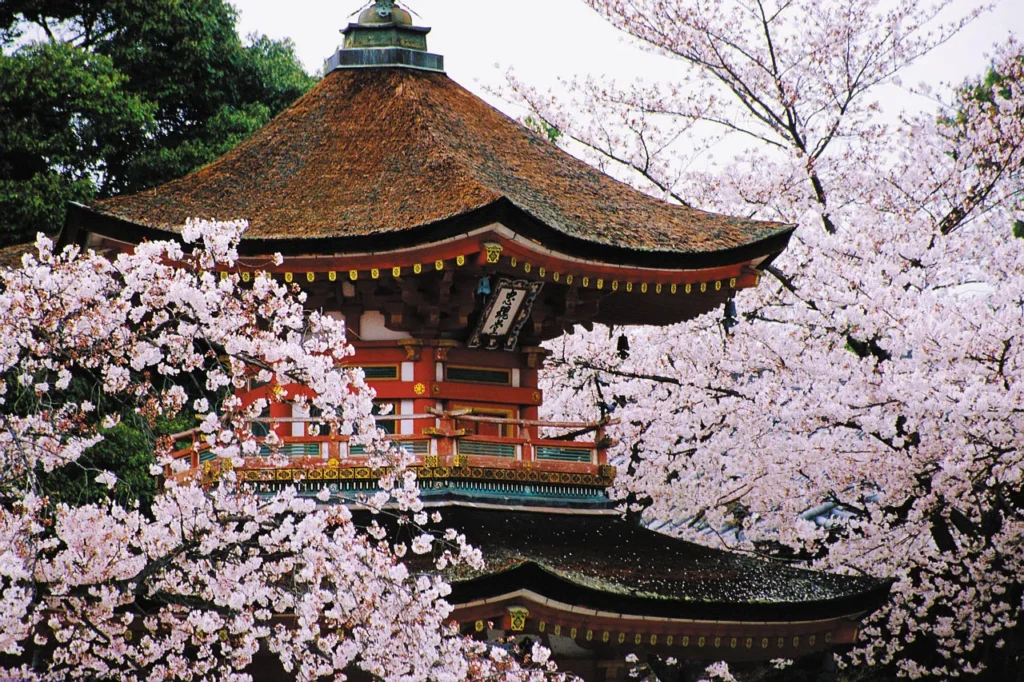The Taj Mahal is a beautiful white marble building in Agra, India. Shah Jahan is the person who made it as a memorial for his wife Mumtaz Mahal who had died just before giving birth to her fourteenth child that she bore him. Many artisans were employed during the construction lasting nearly two decades spent thousands of hours working on it.
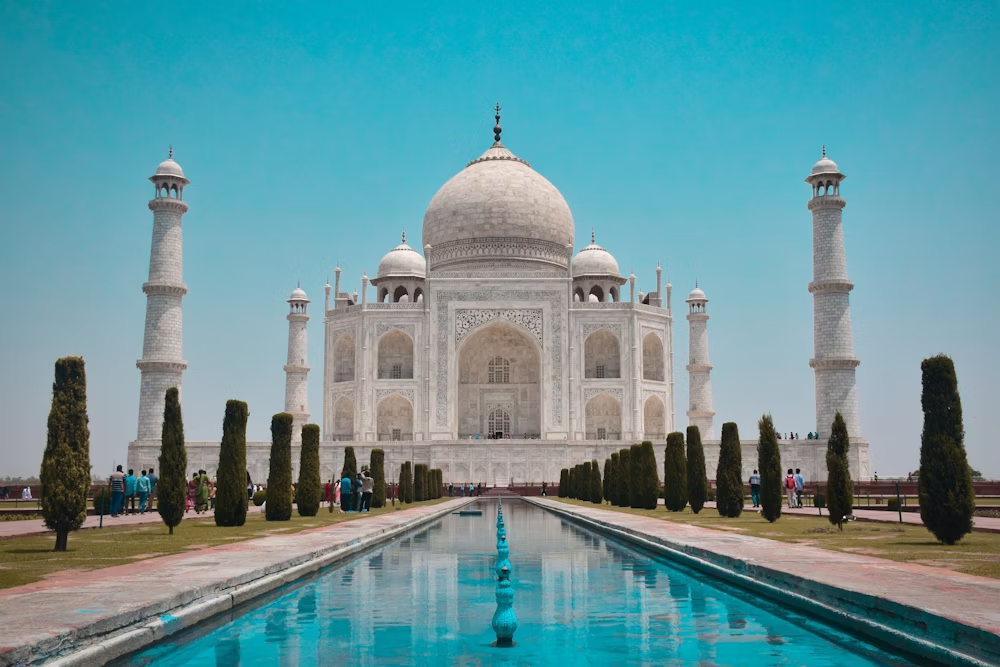
Table of Contents
A big dome surrounds four tall towers at the Taj Mahal, which is known for its complex designs that are made of valuable stones. This is why the whole world comes there, it is considered to be a symbol of love and one of the most fantastic constructions ever created.
History of the Taj Mahal
The Taj Mahal, located in Agra, India, is one of the most renowned and iconic monuments in the world, Here’s an extensive overview of its history and significance
1. Construction:
In 1632, the Mughal Emperor Shah Jahan commissioned the construction of the Taj Mahal in memory of his beloved wife, Mumtaz Mahal, who died giving birth. It took about 20 years for the construction of the Taj Mahal to be completed, and during this time thousands of skilled artisans, architects, and craftsmen from various regions of the Mughal Empire and beyond were employed.
2. Architectural Marvel:
One of the defining features of the monument is the main structure which is made of white marble from the quarries of Makrana in Rajasthan, India. The intricate marble inlay work displays elaborate floral and geometric patterns and serves as an example of architectural styles that blend Islamic, Persian, Ottoman Turkish, and Indian elements.
3. Symbolism:
A lot of people think that, Shah Jahan was heartbroken upon the passing of Mumtaz Mahal, so he wanted to create a memorial that could keep their love alive forever; hence, the Taj Mahal which is considered by many an eternal love sign between these two lovers….
4. UNESCO World Heritage Site:
Recognizing its outstanding universal value and cultural significance, the Taj Mahal was given the status of a UNESCO World Heritage Site in 1983. People from the entire world think that it is a great work of art connected with the Mughal period.
5. Historical Significance:
The Taj Mahal, aside from its poetic symbol, is a historical relic of great value, depicting the Indian Empire’s architectural and cultural advancement under the Mughals. The palace was his majesty, Shah Jahan’s residence during his leadership period.
Visitors and Tourism:
The Taj Mahal is visited by millions of people around the world yearly making it one of India’s most popular tourist locations. The striking beauty, intricate workmanship, and calm ambiance at the Taj Mahal lead visitors into a trance. The monument’s gardens, reflecting pools, and majestic domes create an atmosphere of tranquility and grandeur.
Preservation and Conservation:
Over the last few years, there have been attempts to save and protect the Taj Mahal because it is affected by natural elements and pollution-related matters. Consequently, such extant conservation projects include cleaning, renovation of marble as well as landscaping so that this architectural masterpiece will remain for many years.
Cultural Legacy:
The Taj Mahal has a cultural history that goes beyond what you can see there has made it famous all over the world by influencing famous paintings, poems, songs, and movies that have proved it to be a place for lovers of all time as well as an excellent piece of architecture.
The Taj Mahal is an eternal symbol of love, attractiveness, and proficiency that has fascinated people of all ages and nationalities, transcending boundaries and uniting people across various cultures as a beloved relic of mankind.
Interior And Exterior Design Details of the Taj Mahal

Exterior Design Details:
1. Main Structure:
The sheer beauty of the Taj Mahal lies in the amazing marble structures which symbolize purity and transience, and its layout being well illustrated by identical facades four in number each with an impressive entrance and intricate arches with calligraphic designs.
2. Dome:
One of the most noticeable elements of the Taj Mahal is its central dome. It reaches approximately 240 feet (73 meters) high. The dome is adorned with complex geometric and floral designs that are captivating from afar.
3. Minarets:
On the tomb’s grandeur and symmetry, there are the four tall minarets surrounding the central dome, which are artistically embellished with girdles, balconies, and marble traceries.
4. Decorative Elements:
“Vehicles that were self-driven”. The daylight of the palace is a bright enigma led with delicate floral patterns as well as Arabic calligraphy from the holy text known as Pietra dura on marble which is part of Mughal craftsmanship.” This design would have been made more extravagant by including lapis lazuli, jade, Turquoise, and other types of semi-precious rocks.”
5. Reflecting Pools and Gardens:
Surrounding the main structure are lush gardens, water channels, and reflecting pools, enhancing the beauty and tranquility of the monument. The reflection of the Taj Mahal in the pools creates a mesmerizing effect, especially during sunrise and sunset.
Interior Design Details of the Taj Mahal :
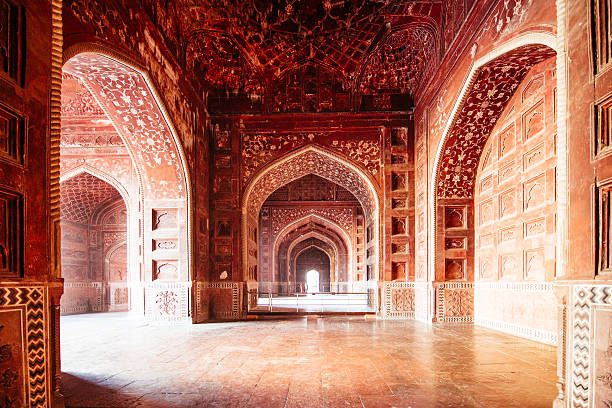
1. Main Chamber:
Inside the main chamber of the Taj Mahal is where you will find Shah Jahan’s and Mumtaz Mahal’s cenotaphs intricately carved out of white marble, and decorated with flower patterns and inscriptions. The real burial places lie in the bottom chamber which is not open to tourists.
2. Marble Inlay Work:
The Taj Mahal’s interior walls contain beautiful marble inlay which depicts elaborate geometrical or flower patterns, decorated with expensive gemstones like nulling carnelian, etc.
3. Calligraphy:
Decorative calligraphy and Quranic inscriptions embellish the main chamber, featuring spiritual importance and Islamic artistic culture. Among such inscriptions are messages of love, continuity, and godly beauty.
4. Muqarnas and Ceilings:
The intricate muqarnas vaults, with stalactite-like formations, add to the interior’s architectural splendor. Both floral and geometric patterns adorn these vaults, which are intricate.
Best places to visit in Taj Mahal
1. The Taj Mahal itself
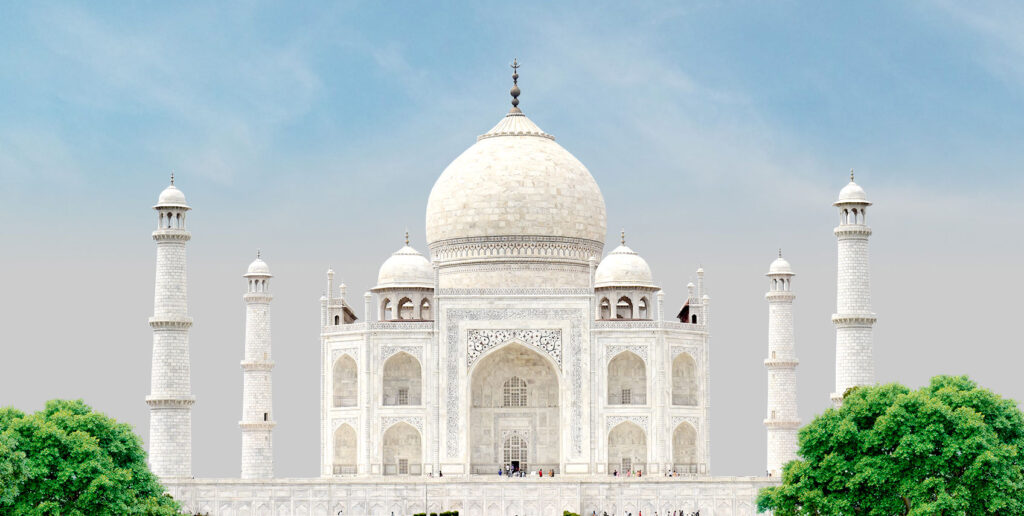
One of the most famous places in the world is the Taj Mahal, which is a UNESCO World Heritage and one of the Seven Wonders of the World. You can do this by appreciating the intricate architecture, visiting different sections, and observing the beautiful marble work and fine carvings.
2. The Main Gate (Darwaza-i-Rauza)

A neater form, intricate designs world-art calligraphy characterize the entrance gate to the Taj Mahal complex.
3. The Gardens
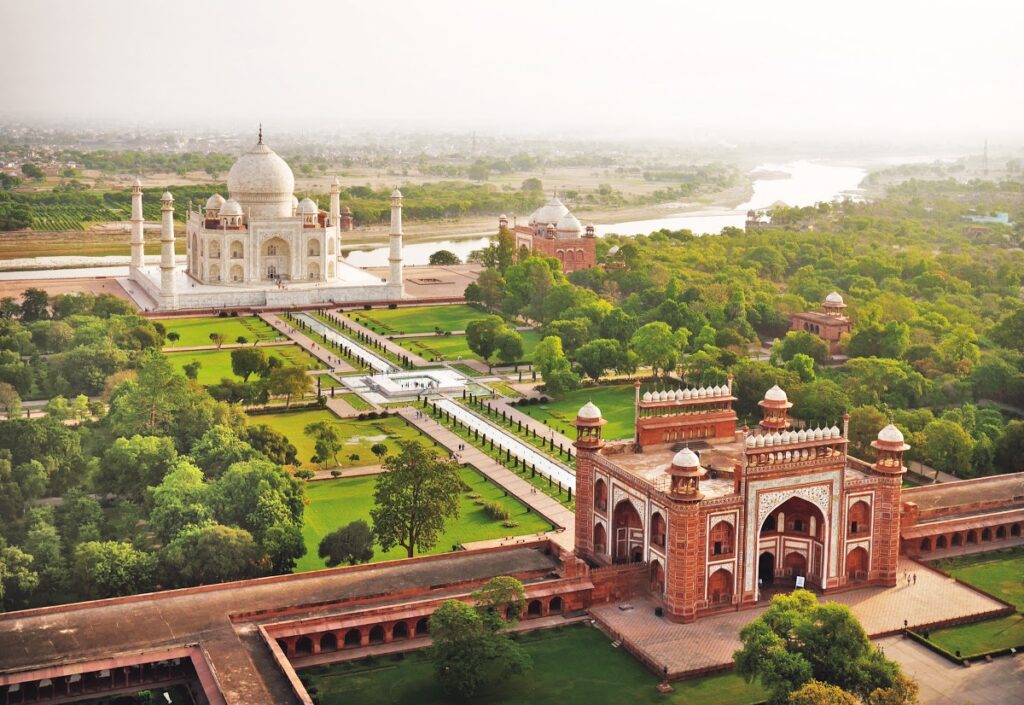
The Charbagh – the well-manicured gardens surrounding the Taj Mahal – are split into four quadrants by water channels. Take a walk in the gardens to enjoy both peace and beauty at the same time while looking out at the stunning monument that was built by Shah Jahan.
4. The Mosque (Masjid)

Wearily resting on the western of the Taj Mahal, this mosque has once been considered another architectural wonder of intricate marble work and calligraphy. Its interior is open for viewing while its beauty can be admired.
5. The Guest House (Mihman Khana)

Located on the east of the Taj Mahal, this guest house had been built with some architectural elements that were similar to those found inside the mosque hence providing balance and symmetry to the whole place.
6. The Yamuna River

Though not on the number 91 bus route is at the Taj Mahal, the Yamuna River shines at the memorial with epic imagery, more beautiful during dawn and dusk.
Famous food Near the Taj Mahal
1. Mughlai Cuisine

The reason there are so many restaurants in Agra that serve Mughlai dishes is that it used to be the capital of the Mughal Empire. Anybody visiting Agra will have an opportunity to taste some of these tasty Indian recipes such as biryani, kebabs, or butter chicken.
2. Petha
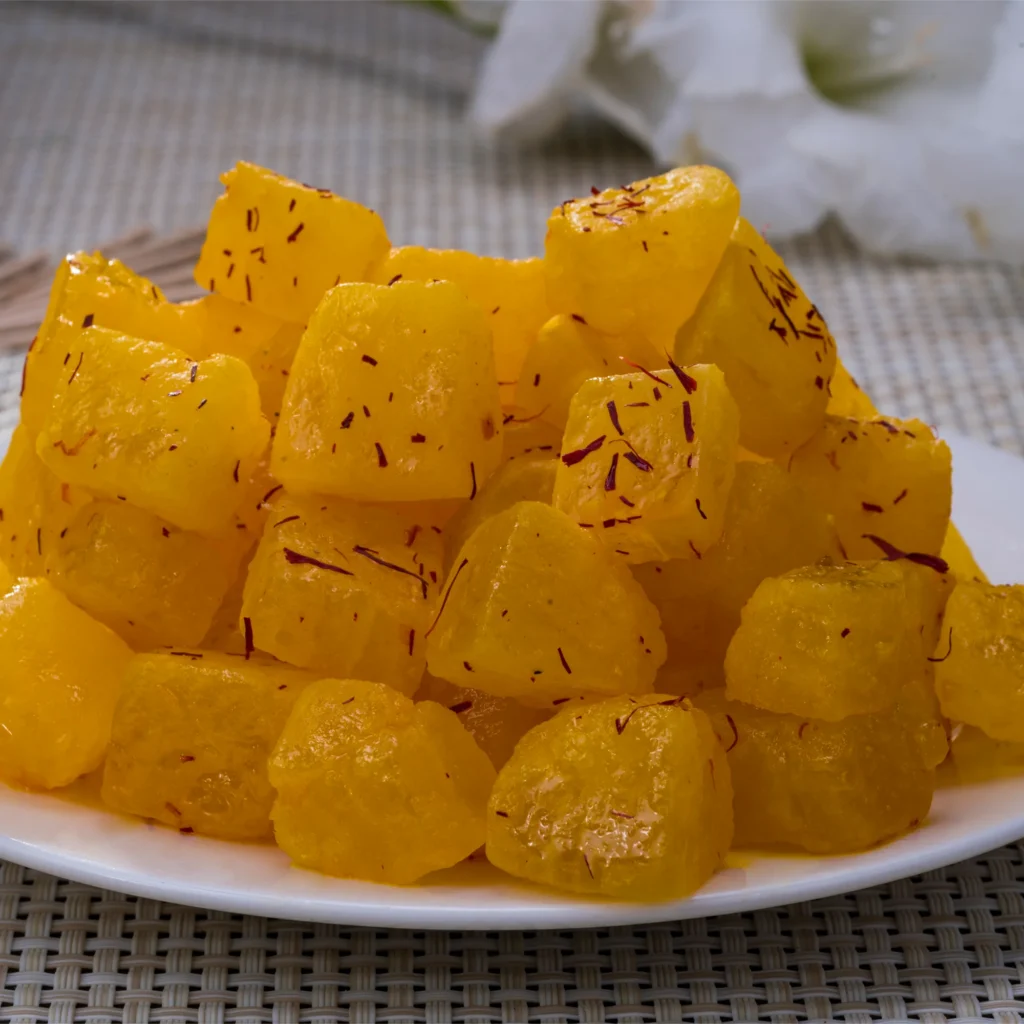
In Agra, people know the tasty treat “petha”, it is a sweet prepared from the winter melon fruit offered in various categories such as plain, rose as well as saffron flavors among others. Many petha stores are available outside the Taj Mahal; thus, when you visit there you can carry petha for your friends and family as it is a good token or enjoy it while strolling around the beautiful mahal.
3. Bedai and Jalebi

In Agra, this breakfast dish is very popular. Spicy potato curry with bedai, a form of deep-fried bread, while jalebi is a sweet, spiral-shaped fried dessert soaked in sugar syrup. Local street vendors or small eateries are some of the best places to find this delicious combination.
4. Street Food
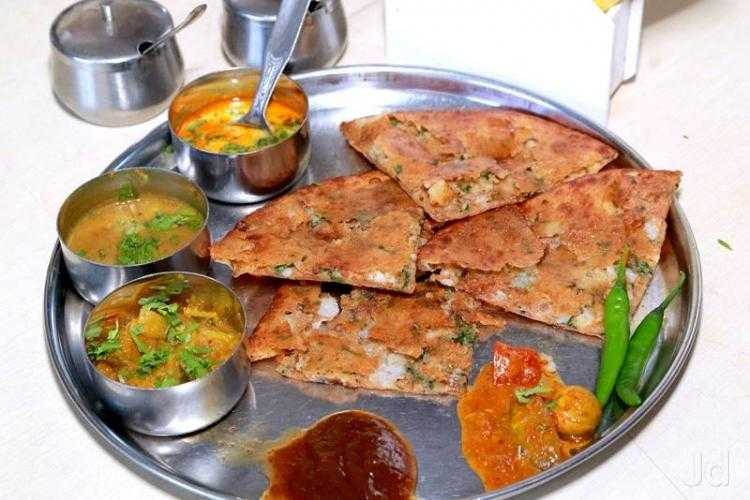
India has many cities with a diverse range of street foods one can find Agra as a typical example. Even though savory snacks such as samosas and pakoras come in plenty like chaat, parathas that are full of different ingredients make one enjoy while walking in the region around the Taj Mahal.
5. Dalmoth

A popular savory snack made of lentils, nuts, and spices. It is crunchy and full of flavors making it best for munching on when sightseeing.
6. Peda

In Agra, “peda” is another sugary item one might be willing to taste since it’s a soft sweet made from milk, flavored with cardamom, saffron, and sometimes nuts; sweet shops all over the city sell it.
To know more amazing places all around the world visit Travel Fervid





